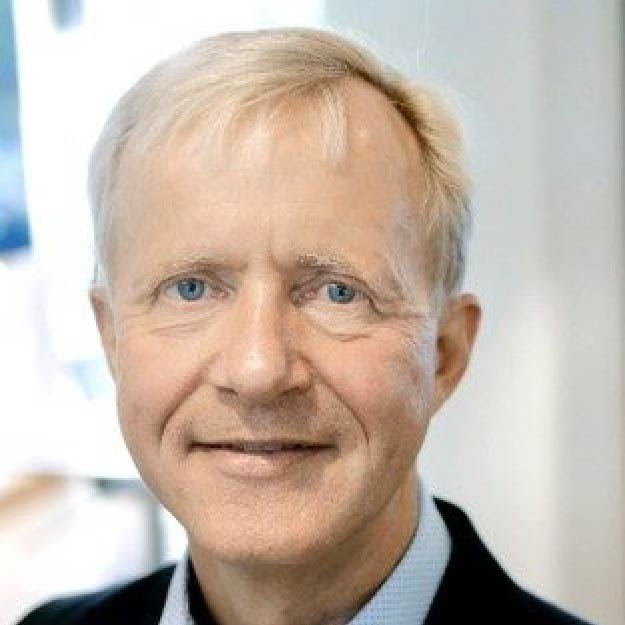Blockchain
Aqua farmers are giving back to the oceans – with technology
July 19, 2021 | Written by: Anders Quitzau
Categorized: Blockchain | Supply chain | Sustainability
Share this post:
Our oceans sustain us. They give us oxygen and they capture carbon dioxide. They feed us and they provide a wage to 40 million people across the world. They bring us joy and they show us beauty.
But we are not sustaining our oceans in return. We are taking more from them than can be replenished. We have destroyed half of all coral reefs. 90% of big fish populations are depleted when one billion people depend on oceans for their main source of protein. With time running out, what can we do?
We need a new vision for sustainable aquaculture and apply technology and lift he barriers to make it happen. We’re at a key point to be able to make the difference that we need, to be able to protect this valuable resource for generations to come.
Changing the reputation of aquaculture
Given its mixed reputation and calls from some quarters to stop eating fish altogether, is aquaculture really the right way forward? We must recognize that negative misinformed public opinion of aquaculture is a hindrance. But the idea that we can’t sustainably farm contained animals in the sea, is just not right. 50% of people in developing countries for whom fish is a primary source of protein say that any attempt to stop them sourcing fish would be disproportionately unjust.
No sustainability without transparency
Transparency is the baseline for any sustainability drive. As an example, Atea has partnered (see this 5 min. BBC documentary) with the Norwegian Seafood Association and IBM to use blockchain to provide information about the life story of Norwegian salmon to partners along its journey: from industry buyers to customs authorities, and eventually to dinners in restaurants. Most oceanproducers want to be responsible. To go out into the ocean is a privilege, and it needs to be transparently done, engaging with society.
Tech innovation all along the value chain
Given the urgent need to act, what are some the technology options that can already be deployed to aquaculture today?
- Breakthroughs in Marine Spatial Planning (MSP), which may be described as ‘conflict resolution among different users in the ocean so that everyone is able to sustainably use the ocean’. MSP is similar to land zone planning, but much more complex in the underwater and less-known environment of the ocean. Responsible ocean farmers use MSP to “detect any type of marine habitat reefs or potential life and design their farms in the least impactful location.
- IBM and a broad group of industry and academic partners collaborate, on an EU funded project called GAIN (Green Aquaculture Intensification in Europe). Amongst other activities, GAIN imbeds sensors and monitors into fish and fish farms, and IBM analytics and machine learning technologies are applied to the data collected. The results help farmers make real time decisions, prevent environmentally damaging activities such as excess feed and fish escapes, and predict the impacts of a range of circumstances on the surrounding waters and on the welfare of the fish itself.
- The data gathered in the aforementioned blockchain project for Norwegian salmon is of use across the full value chain – from governments to customers to suppliers. In an industry where bad practices by some players leads to doubts about the true origin and sustainability of fish “the beauty of blockchain is that data cannot be manipulated after it’s put on there.” Before too long people in restaurants will be able to have, via a QR code, the life story of the Norwegian salmon on the menu.
- Fish farming data captured on the blockchain could also be used as evidence to gain official certifications of sustainability, which are increasingly important to retailers and buyers of fish.
The challenges of accessibility, education and inclusion
IBM is committed to including smallholders in our initiatives to develop sustainable agriculture. The same should apply to aquaculture. It is a challenge that many fish farms are not digitized nor are their owners digitally-savvy. Atea had to convince and educate a whole sector about data and blockchain. As technologies rapidly evolve, it will be necessary for small players in aquaculture to be aware of what solutions are available and how to use them. Also, we need to educate the public to become more “ocean-literate” to be able to interpret the troves of data that are available, and to understand the meaning of certification. Especially the young generation is concerned about the oceans and a lot of energy, creativity and resources can be found here. We must ensure that young people’s voices are heard. Even if they are not tech-savvy – or sometimes don’t have access to the technology – young people care about oceans and they need the opportunities and the support to be able to make a difference.
We’re at that point…
We are now at an infliction point where it is time to stop and reflect on all that the ocean provides to us and how we can use technology to give back. I truly believe we are at that crucial point where individuals, nations, companies and organizations are starting to engineer sustainability through the aquaculture value chain.
If you like to explore, how technology can accelerate your sustainability journey, feel free to contact me at andersq@dk.ibm.com or +45 2880 4705

Research & Innovation Executive, IBM Research - IBM Watson
Data Democratization – making data available
One of the trending buzzwords of the last years in my world is “Data Democratization”. Which this year seems to have been complemented by “Data Fabric” and “Data Mesh”. What it is really about the long-standing challenge of making data available. It is another one of these topics that often gets the reaction “How hard […]
How to act in the new regulation of financial sector
Our world is changing. Because of that regulators around the world are taking ambitious steps to improve the sustainability of the financial sector and guide capital towards sustainable economic activity. Especially in EU we are seeing a high level of regulations. These regulatory interventions present complex and sensitive legal challenges for financial sector firms, which […]
Private cloud or public cloud? New server technology offers more choice
In September, we launched the new IBM Power E1080 high-end server, for corporate use based on the new Power10 architecture, the Power E1080. The server can – among many other things – handle a large number of applications and workloads securely, at scale and with highest availability. Going into the spring of 2022, we will […]



